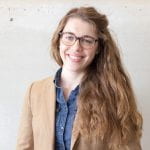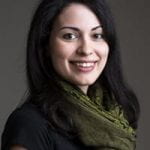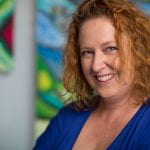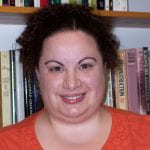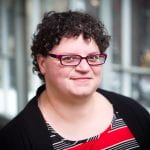Click on the map to view NEH Summer Scholars and Projects
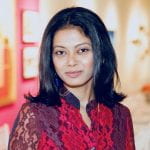 Grace Aneiza Ali is an Assistant Professor and Faculty Fellow in Art & Public Policy at Tisch School of the Arts at New York University in New York and a curator. Ali’s curatorial research practice centers on socially engaged art practices, global contemporary art, and art of the Caribbean Diaspora, with a focus on her homeland Guyana. She is founder/curator of GuyanaModern.com featuring the contemporary arts and culture of Guyana and founder/editorial director of OF NOTE Magazine — an award-winning nonprofit publication on art and activism. She is a NYU Provost Faculty Fellow, Andy Warhol Foundation Curatorial Fellow, and Fulbright Scholar. She was named a World Economic Forum ‘Global Shaper’ and is a board member of Images and Voices of Hope, which uses journalism to create meaningful, positive change. For her independent project, Ali is developing “Curatorial Activism and the Museum,” a course on museum initiatives to combat the historically silenced or omitted from master narratives of art.
Grace Aneiza Ali is an Assistant Professor and Faculty Fellow in Art & Public Policy at Tisch School of the Arts at New York University in New York and a curator. Ali’s curatorial research practice centers on socially engaged art practices, global contemporary art, and art of the Caribbean Diaspora, with a focus on her homeland Guyana. She is founder/curator of GuyanaModern.com featuring the contemporary arts and culture of Guyana and founder/editorial director of OF NOTE Magazine — an award-winning nonprofit publication on art and activism. She is a NYU Provost Faculty Fellow, Andy Warhol Foundation Curatorial Fellow, and Fulbright Scholar. She was named a World Economic Forum ‘Global Shaper’ and is a board member of Images and Voices of Hope, which uses journalism to create meaningful, positive change. For her independent project, Ali is developing “Curatorial Activism and the Museum,” a course on museum initiatives to combat the historically silenced or omitted from master narratives of art.
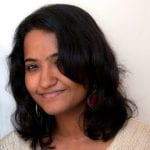 Sowparnika Balaswaminathan is an Anthropologist of museums, traditional arts, and South Asia at University of California San Diego in California. She studies governmental museums in India, representations of artisans and traditional art, and the intersection between aesthetics and ethics. Sowparnika is currently working on a book manuscript based on her dissertation research concerning a community of sculptors in Swamimalai, Tamilnadu, and the contemporary status of South Indian bronze casting tradition in India. She has also worked as a Lecturer, Editorial Assistant, and Administrative Coordinator in the past. At the NEH Institute on Museums, Sowparnika plans to finalize the draft of an article on postcolonial museums for a peer-reviewed journal and conduct fieldwork on a second project involving an anthropological collection of Indian cultural artifacts at the Smithsonian’s National Museum of Natural History.
Sowparnika Balaswaminathan is an Anthropologist of museums, traditional arts, and South Asia at University of California San Diego in California. She studies governmental museums in India, representations of artisans and traditional art, and the intersection between aesthetics and ethics. Sowparnika is currently working on a book manuscript based on her dissertation research concerning a community of sculptors in Swamimalai, Tamilnadu, and the contemporary status of South Indian bronze casting tradition in India. She has also worked as a Lecturer, Editorial Assistant, and Administrative Coordinator in the past. At the NEH Institute on Museums, Sowparnika plans to finalize the draft of an article on postcolonial museums for a peer-reviewed journal and conduct fieldwork on a second project involving an anthropological collection of Indian cultural artifacts at the Smithsonian’s National Museum of Natural History.
 Formerly an occupational therapist, Roann Barris eventually decided to become an Art Historian with a focus on Russian and Contemporary Art. Now a full Professor of Art History at Radford University in Radford, Virginia, she continues her research on Russian constructivist theater with the help of research visits to Moscow. More recently, her research transitioned to a study of American exhibitions of Russian art in the past century. Although this project is ongoing, her summer project will probably focus on holocaust museums. She is especially interested in the Berlin Jewish Museum which is not a holocaust museum but felt like one to her. She is very excited by the opportunity to visit the Museum of African History and Culture, and the Hillwood Estate and Museum, the former because it relates more closely to her Museum Studies classes on Ethics in the Visual Arts and the latter because of its iconic status in the research on collections of Russian art.
Formerly an occupational therapist, Roann Barris eventually decided to become an Art Historian with a focus on Russian and Contemporary Art. Now a full Professor of Art History at Radford University in Radford, Virginia, she continues her research on Russian constructivist theater with the help of research visits to Moscow. More recently, her research transitioned to a study of American exhibitions of Russian art in the past century. Although this project is ongoing, her summer project will probably focus on holocaust museums. She is especially interested in the Berlin Jewish Museum which is not a holocaust museum but felt like one to her. She is very excited by the opportunity to visit the Museum of African History and Culture, and the Hillwood Estate and Museum, the former because it relates more closely to her Museum Studies classes on Ethics in the Visual Arts and the latter because of its iconic status in the research on collections of Russian art.
Gretchen Bender is Assistant Chair and Director of Undergraduate Studies for the History of Art and Architecture Department at the University of Pittsburgh in Pennsylvania. She leads the WHAAM project at Pittsburgh – Why the History of Art and Architecture Matters – which prioritizes community engagement and teaching. She has developed World Art courses, leads pedagogical initiatives for the department and oversees curricular development for the History of Art and Architecture major. She is currently overseeing the conversion of a Museum Studies minor into a major, her project for the Summer Institute. Key questions include: what role can Art History play in advancing inclusion and global understanding; what does a civic-minded Art History and Museum Studies curriculum look like; how can we ensure our learning objectives are met; how can we successfully balance dispositional skill building, collaborative and active learning, and close mentoring with the development of content knowledge; and what does a public-facing humanities program look like and how does it operate at the curricular and programmatic level?
 Cassandra Cavness serves as the Humanities Digital Archivist for Alabama State University in Montgomery. She is also the Museum Consultant for the National Center for the Study of Civil Rights and African American Culture at Alabama State University. Previously, she has served as the manager of the Sue & Leon Genet Gallery on the campus of Syracuse University and has worked for the Crawford Family U.S. Olympic Archives. Her primary research focus is the interpretation of History through a visual lens. Currently, she serves as the 2019 Junior Executive Board President for the Montgomery Museum of Fine Arts in Montgomery, AL, as a board member for the Alabama Institute for Education in the Arts in Montgomery, as the Treasurer for the Alabama Museum Association, and as Co-Chair for the Alabama chapter of the National Emerging Museum Professionals Network. Cassandra plans to utilize the knowledge and experience gained at the institute to create a new approach to the University’s public programming and scholarly initiatives pertaining to portions of the Cultural District at Alabama State University. She is interested in developing initiatives that engage the student body with the University’s history through the use of memory and the juxtaposition of tribulations and triumphs.
Cassandra Cavness serves as the Humanities Digital Archivist for Alabama State University in Montgomery. She is also the Museum Consultant for the National Center for the Study of Civil Rights and African American Culture at Alabama State University. Previously, she has served as the manager of the Sue & Leon Genet Gallery on the campus of Syracuse University and has worked for the Crawford Family U.S. Olympic Archives. Her primary research focus is the interpretation of History through a visual lens. Currently, she serves as the 2019 Junior Executive Board President for the Montgomery Museum of Fine Arts in Montgomery, AL, as a board member for the Alabama Institute for Education in the Arts in Montgomery, as the Treasurer for the Alabama Museum Association, and as Co-Chair for the Alabama chapter of the National Emerging Museum Professionals Network. Cassandra plans to utilize the knowledge and experience gained at the institute to create a new approach to the University’s public programming and scholarly initiatives pertaining to portions of the Cultural District at Alabama State University. She is interested in developing initiatives that engage the student body with the University’s history through the use of memory and the juxtaposition of tribulations and triumphs.
Sarah Dees is a scholar of American and Indigenous religions at Northwestern University in Evanston, Illinois. She received her B.A. from the University of Kansas, M.A. from the University of Iowa, and Ph.D. from Indiana University. She taught as a Lecturer at the University of Tennessee from 2014 to 2016 and is currently the Luce Postdoctoral Fellow in Religion, Politics, and Global Affairs at Northwestern University. In the fall of 2019, she will be joining the faculty of Iowa State University as Assistant Professor of American Religions. She writes, lectures, and teaches on topics including religion and museums, race, law, politics, empire, and public history. She is currently working on a book manuscript tentatively titled The Materialization of Native American Religions: The Smithsonian Institution, Settler Colonialism, and the Study of Indigenous Lifeways, which examines the history and legacy of nineteenth-century museum research on Native American Religions. Her NEH Institute summer project is entitled “Museum Representations of Material Religion: History, Scholarship, Pedagogy, & Practice.” During the Institute, she will be conducting research for a new monograph, Religion and Museums, and revising a syllabus on the same topic.
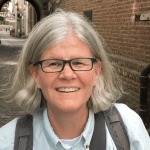 Jennifer Dickey is an Associate Professor of History and the Coordinator of the Public History Program at Kennesaw State University in Georgia. She is the co-editor of Museums in a Global Context (2013), author of a Tough Little Patch of History: Gone with the Wind and the Politics of Memory (2014), and Memories of the Mansion: The History of Georgia’s Governor’s Mansion (2015). Jennifer will be working with the historic DACOR Bacon House in Washington, DC, to revise its interpretive plan, a project to which her students will contribute in fall 2019.
Jennifer Dickey is an Associate Professor of History and the Coordinator of the Public History Program at Kennesaw State University in Georgia. She is the co-editor of Museums in a Global Context (2013), author of a Tough Little Patch of History: Gone with the Wind and the Politics of Memory (2014), and Memories of the Mansion: The History of Georgia’s Governor’s Mansion (2015). Jennifer will be working with the historic DACOR Bacon House in Washington, DC, to revise its interpretive plan, a project to which her students will contribute in fall 2019.
Michelle DiMarzo is Curator of Education and Academic Engagement at the Fairfield University Art Museum in Connecticut and teaches courses in Art History and Museum Studies. She received a Ph.D. in Art History from Temple University in 2017 with a specialization in Italian Renaissance Visual Art. She has received support from the Gladys Krieble Delmas Foundation and the American Academy in Rome, where she held the Phyllis G. Gordan/Samuel H. Kress Foundation Two-Year Predoctoral Rome Prize. During the NEH Institute, she will be working on a proposal for a series of team-taught interdisciplinary courses designed to offer Fairfield University students across the Humanities the opportunity to participate in the research and public presentation of future museum exhibitions.
![]()
 Elijah Gaddis is an Assistant Professor of History at Auburn University in Alabama where he teaches courses on Public History and Digital Humanities. His research focuses on the spatial, cultural, and material histories of the twentieth-century South. He will use the Summer Institute to continue work on his current project, “Gruesome Looking Objects: Material Culture and the Spread of Lynching,” by examining the processes of collecting and displaying objects of racial violence in museum collections.
Elijah Gaddis is an Assistant Professor of History at Auburn University in Alabama where he teaches courses on Public History and Digital Humanities. His research focuses on the spatial, cultural, and material histories of the twentieth-century South. He will use the Summer Institute to continue work on his current project, “Gruesome Looking Objects: Material Culture and the Spread of Lynching,” by examining the processes of collecting and displaying objects of racial violence in museum collections.
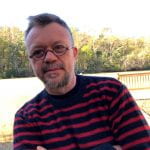 Antonio Gómez is an Associate Professor in the Department of Spanish and Portuguese at Tulane University in New Orleans, Louisiana, where he teach courses on Latin American Literature, Film, and Cultural Studies, with a special emphasis on Argentina. His research interests are documentary film, exile and other processes of displacement in Latin America, and the cultural history of Peronism. The project he will be working on is the preparation of an undergraduate course titled “Memory and the Negotiation of Public Space,” which he will offer for the first time next fall. The purpose of the course is to come to a better understanding of the articulation of public space in its relationship to history and memory.
Antonio Gómez is an Associate Professor in the Department of Spanish and Portuguese at Tulane University in New Orleans, Louisiana, where he teach courses on Latin American Literature, Film, and Cultural Studies, with a special emphasis on Argentina. His research interests are documentary film, exile and other processes of displacement in Latin America, and the cultural history of Peronism. The project he will be working on is the preparation of an undergraduate course titled “Memory and the Negotiation of Public Space,” which he will offer for the first time next fall. The purpose of the course is to come to a better understanding of the articulation of public space in its relationship to history and memory.
 Laurie Koloski is an Associate Professor of History at William & Mary in Williamsburg, Virginia, with degrees from the University of Michigan, Yale University, and Stanford University. Her research centers on Social and Cultural History in early post-1945 Poland. She teaches courses on Modern and Contemporary Europe, Communism and Socialism, Historical Interpretation, World History since 1000, and Material Culture, and she is particularly excited about the potential for collaborative museum-focused initiatives in a freshman course titled “Stuff: Objects and Their Histories.” Students in the course use web-based timelines to trace a single object’s shifting uses and meanings over time, and Laurie hopes to stretch this “one object, three moments, three meanings” assignment into a “one object, three museums, three narratives” NEH project that explores how a single object might be interpreted and displayed differently in each of three different museums.
Laurie Koloski is an Associate Professor of History at William & Mary in Williamsburg, Virginia, with degrees from the University of Michigan, Yale University, and Stanford University. Her research centers on Social and Cultural History in early post-1945 Poland. She teaches courses on Modern and Contemporary Europe, Communism and Socialism, Historical Interpretation, World History since 1000, and Material Culture, and she is particularly excited about the potential for collaborative museum-focused initiatives in a freshman course titled “Stuff: Objects and Their Histories.” Students in the course use web-based timelines to trace a single object’s shifting uses and meanings over time, and Laurie hopes to stretch this “one object, three moments, three meanings” assignment into a “one object, three museums, three narratives” NEH project that explores how a single object might be interpreted and displayed differently in each of three different museums.
Celeste Landeros is a Classical Soprano, Visual and Performing Arts critic, and Performance Studies scholar who has covered the South Florida arts scene for 20 years. Now a professor of English and Humanities at Barry University in Miami Shores, Florida, she co-edited Everynight Life: Culture and Dance in Latin/o America and has published in Dance Research Journal, Conversations Across the Field of Dance Studies, and Small Axe. She founded and directs Carnival Arts, a youth arts education program through which she has exhibited at the Miami International Airport; had work commissioned by the Faena Foundation; won grants from Miami-Dade County, the Florida Division of Cultural Affairs, and the NEA – all chronicled in a manuscript to be published by Caribbean Studies Press. She serves on the Florida Folklife Council, so her individual project will explore documentation, archiving, and exhibition practices at the Smithsonian Center for Folklife and Cultural Heritage.
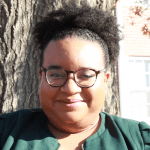 Allie Martin is a Ph.D. Candidate in Folklore and Ethnomusicology at Indiana University in Bloomington, Indiana. Originally from the Washington, DC Metropolitan Area, her research explores connections between race, sound, and gentrification in DC. Considering specifically how black residents in DC are affected by the sonorities of gentrification, she combines ethnographic fieldwork, soundscape recording, and digital humanities work in order to better understand what’s at stake for black sound in gentrifying neighborhoods. Allie’s independent project for the summer will be to work towards making the mapping and soundscape aspects of her project public facing.
Allie Martin is a Ph.D. Candidate in Folklore and Ethnomusicology at Indiana University in Bloomington, Indiana. Originally from the Washington, DC Metropolitan Area, her research explores connections between race, sound, and gentrification in DC. Considering specifically how black residents in DC are affected by the sonorities of gentrification, she combines ethnographic fieldwork, soundscape recording, and digital humanities work in order to better understand what’s at stake for black sound in gentrifying neighborhoods. Allie’s independent project for the summer will be to work towards making the mapping and soundscape aspects of her project public facing.
Jaime Amanda Martinez is a Professor of History at the University of North Carolina at Pembroke in North Carolina, where she teaches courses in various aspects of nineteenth-century United States History and has recently taken on responsibility for courses and projects in the field of Public History. In recent years she has taught classes that traveled to Charleston and Savannah to examine the representation of slavery at historic sites, performed research in state archives to support new interpretive work at her campus’ Museum of the Southeast American Indian, and proposed a new state historical marker for an event of great significance in our community. Her goal during the Institute is to revamp her Introduction to Public History syllabus to reflect current best practices in the academic field of public history (a field in which she has no formal training) and focus on community engagement in a way that is particularly suited to her institution’s history as an American Indian-serving school.
David Matteson is the Associate Curator of Education and Outreach at the Orlando Museum of Art in Florida, where he oversees and facilitates adult and community access programming. David holds a B.A. in Studio Art and English from Rollins College and an M.B.A, from the Crummer Graduate School of Business. He is currently completing coursework towards his Ph.D. in Texts and Technology at the University of Central Florida. His graduate research focuses on the application of technology within museum practice for the purposes of informal learning. At the Summer Institute, David plans to create a new education program model to implement when he returns to OMA. He is particularly interested in designing a citizenship-based curriculum that utilizes the OMA collection to engage new Americans and prepare them for the US Naturalization Test.
Rubén Mendoza is an archaeologist, writer, photographer and founding faculty member and current Chair of the School of Social, Behavioral and Global Studies at CSU Monterey Bay in California. He has directed archaeological investigations on the Colorado Front Range and the Spanish and Indian missions of California. His archaeological discoveries include the Serra Chapels of the Spanish Royal Presidio of Monterey. Awarded the California Preservation Foundation “Preservation Design Award” (2009), he was a lead consultant on the UNESCO World Heritage List nomination of the San Antonio Missions in 2012. He was an invited participant and guest of the Papal See for the Serra Symposium convened in Vatican City in 2015. His summer project will advance the completion of a visual glossary of California mission material cultures and traditional technologies intended to serve as a guide to the art, artifacts, and technologies of early Amerindian and Hispanic traditions in California and the West.
 Adrienne Pine is a Medical Anthropologist and Associate Professor at American University in Washington, DC who has worked in Honduras, Cuba, South Korea, Egypt, Spain, and the United States. She is currently working—along with colleagues and graduate students at AU—on a collaborative ethnographic curation project alongside several historic black communities in Montgomery County, MD. The project aims to document and celebrate their rich histories, to support them in their struggles against the desecration of their cemeteries and the increasing gentrification that threatens the survival of these communities.
Adrienne Pine is a Medical Anthropologist and Associate Professor at American University in Washington, DC who has worked in Honduras, Cuba, South Korea, Egypt, Spain, and the United States. She is currently working—along with colleagues and graduate students at AU—on a collaborative ethnographic curation project alongside several historic black communities in Montgomery County, MD. The project aims to document and celebrate their rich histories, to support them in their struggles against the desecration of their cemeteries and the increasing gentrification that threatens the survival of these communities.
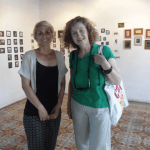 Hinda Seif is Associate Professor of Anthropology and Women/Gender Studies and Chair of the Women & Gender Studies Department at University of Illinois at Springfield. Her current research focuses on women visual artists of Mexican ancestry in Chicago. Recent publications include “Space, Place and Belonging: Multidisciplinary Artist Nicole Marroquín” (GénEros, 2019) and “Visualizing Spaces of Empowerment in Chicanx/Mexicanx Chicago with Artist/Photographer Diana Solís” (Diálogo 2018). For her NEH Summer Institute project, she will be examining the relationship of Chicago’s women visual artists of Mexican ancestry to the city’s museums, with a focus on opportunities to exhibit their work.
Hinda Seif is Associate Professor of Anthropology and Women/Gender Studies and Chair of the Women & Gender Studies Department at University of Illinois at Springfield. Her current research focuses on women visual artists of Mexican ancestry in Chicago. Recent publications include “Space, Place and Belonging: Multidisciplinary Artist Nicole Marroquín” (GénEros, 2019) and “Visualizing Spaces of Empowerment in Chicanx/Mexicanx Chicago with Artist/Photographer Diana Solís” (Diálogo 2018). For her NEH Summer Institute project, she will be examining the relationship of Chicago’s women visual artists of Mexican ancestry to the city’s museums, with a focus on opportunities to exhibit their work.
 Emily Smith is the Collections Coordinator for the Randolph College Natural History & Archaeology Collections Project in Lynchburg, Virginia, which she founded with Doug Shedd in 2011 to engage students and faculty in the preservation and use of biological and geological specimens as well as cultural artifacts. She was recently awarded a travel grant from the Paul Mellon Centre for British Art, to complete her independent collections-based research on the eighteenth-century natural history illustrator, Sydney Parkinson. As an undergraduate student, she participated in the University of Florida Preservation Institute: Nantucket (2004) and completed an archaeological field school as well as an internship on historic landscapes at Thomas Jefferson’s Poplar Forest. Emily’s project for the 2019 NEH Summer Institute will be to develop a focused cataloging, documentation, and exhibition program to allow students and faculty to fully utilize a limited portion of the natural history collections while the Martin Science building is undergoing a major renovation.
Emily Smith is the Collections Coordinator for the Randolph College Natural History & Archaeology Collections Project in Lynchburg, Virginia, which she founded with Doug Shedd in 2011 to engage students and faculty in the preservation and use of biological and geological specimens as well as cultural artifacts. She was recently awarded a travel grant from the Paul Mellon Centre for British Art, to complete her independent collections-based research on the eighteenth-century natural history illustrator, Sydney Parkinson. As an undergraduate student, she participated in the University of Florida Preservation Institute: Nantucket (2004) and completed an archaeological field school as well as an internship on historic landscapes at Thomas Jefferson’s Poplar Forest. Emily’s project for the 2019 NEH Summer Institute will be to develop a focused cataloging, documentation, and exhibition program to allow students and faculty to fully utilize a limited portion of the natural history collections while the Martin Science building is undergoing a major renovation.
Sam Smith recently completed his Ph.D. in Geography at the University of Colorado, Boulder. His doctoral research traces several themes at the intersection of cultural geography and museum studies. These include, first, how history museums balance iconic and critical perspectives on the history of the American West, second, how museum exhibit spaces sequence and present narratives, and third, how museum narratives connect multiple locations into larger-scale presentations of regional history and identity. Since completing his Ph.D., Sam has continued to teach courses in Western American Studies and Mountain Geography for the University of Colorado. His continuing research projects include a comparison of museums and memorials at World-War II-era internment camps for Japanese Americans, and a review and analysis of state history museums across America. In his free time, Sam is an avid hiker, skier, and contra dancer.
Stefanie Snider, Ph.D., is Assistant Professor of Art History at Kendall College of Art and Design in Grand Rapids, Michigan. Her teaching interests include Contemporary Art, History of Photography, Museum Studies, and Visual Art as Activism. Her research focuses on contemporary visual representations by, for, and about marginalized communities, including LGBTQ+ people, fat people, disabled people, and people of color. Snider is dedicated to showcasing makers and subjects who have historically been left out of conventional art spaces and Art History discourses as part of a larger view toward representing Art History as a project dedicated at least in part to social justice and the politics of visibility. During the Summer Institute, she will research and develop an undergraduate class syllabus on interdisciplinary practices and public museums that seeks to link the art and design education focus of her home institution with broader critical inquiry into the structures and methods of public museums in a global context.
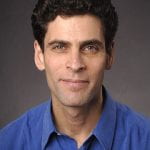 Jamie Spiller is Professor of Modern United States history at SUNY Brockport near Rochester, New York. After a long stint in an administrative role, he was happy to recently return to the classroom and add a new field of instruction – Public History. Having studied Cold War US nationalism and federal science and technology (especially space and Antarctic exploration), he is embarking on a new study of war and modern American culture and memory. His independent project, in preparation for his year’s sabbatical research, will be to do some groundwork for a digital humanities website/Story Maps “Commemorating American Wars, Veterans, and National Tragedies during the Past Half-Century.”
Jamie Spiller is Professor of Modern United States history at SUNY Brockport near Rochester, New York. After a long stint in an administrative role, he was happy to recently return to the classroom and add a new field of instruction – Public History. Having studied Cold War US nationalism and federal science and technology (especially space and Antarctic exploration), he is embarking on a new study of war and modern American culture and memory. His independent project, in preparation for his year’s sabbatical research, will be to do some groundwork for a digital humanities website/Story Maps “Commemorating American Wars, Veterans, and National Tragedies during the Past Half-Century.”
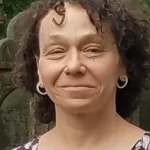 Jill Strauss, Ph.D., teaches Conflict Resolution and Communications at Borough of Manhattan Community College, CUNY in New York. Her research involves restorative justice practices and the visual interpretation of narrative and difficult histories. She is co-editor of the anthology, Slavery’s Descendants: Shared Legacies of Race and Reconciliation (Rutgers University Press, May 2019). She completed her Ph.D. at the University of Ulster in Northern Ireland in 2010, where she designed an innovative fieldwork project integrating storytelling and visual art for empathy and validation as one way to address a history of mutual humiliation and historical conflict. She also holds a Master of Education in Peace Education and Conflict Resolution from Teachers College, Columbia University. For the NEH Summer Institute, her project is to expand a course she taught during an intensive winter session into a semester long course on the intersections of race, class, and gender using the possibilities of the empty pedestal after a controversial statue has been removed to illuminate the untold histories.
Jill Strauss, Ph.D., teaches Conflict Resolution and Communications at Borough of Manhattan Community College, CUNY in New York. Her research involves restorative justice practices and the visual interpretation of narrative and difficult histories. She is co-editor of the anthology, Slavery’s Descendants: Shared Legacies of Race and Reconciliation (Rutgers University Press, May 2019). She completed her Ph.D. at the University of Ulster in Northern Ireland in 2010, where she designed an innovative fieldwork project integrating storytelling and visual art for empathy and validation as one way to address a history of mutual humiliation and historical conflict. She also holds a Master of Education in Peace Education and Conflict Resolution from Teachers College, Columbia University. For the NEH Summer Institute, her project is to expand a course she taught during an intensive winter session into a semester long course on the intersections of race, class, and gender using the possibilities of the empty pedestal after a controversial statue has been removed to illuminate the untold histories.
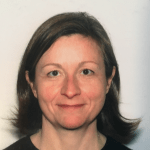 Francesca Torello is an Historian of Architecture and of the Built Environment and a Lecturer in Architectural and Urban History at the School of Architecture of Carnegie Mellon University in Pittsburgh, Pennsylvania. Her research focuses on the role of History and Archaeology in architectural education and practice, particularly at the turn of the twentieth century. Some of her recent work is situated at the intersection of Architecture, the Humanities and Digital Media. It includes a number of interrelated projects in collaboration with the Carnegie Museum of Art in Pittsburgh, among them an Augmented Reality experience for plaster casts, “ReCast”, which was part of the “Copy+Paste” exhibition (2018). During the NEH Summer Institute, Francesca plans to continue work on two in-progress projects: the first is the history of a collection in Pittsburgh, in the frame of the cultural debate about Museums between the Gilded Age and the early Twentieth century – founders, public, high and low culture, which past was considered worth exhibiting and why. The other project considers the long-term, paradigm-shifting consequences of the adoption of digital technologies in Museums today.
Francesca Torello is an Historian of Architecture and of the Built Environment and a Lecturer in Architectural and Urban History at the School of Architecture of Carnegie Mellon University in Pittsburgh, Pennsylvania. Her research focuses on the role of History and Archaeology in architectural education and practice, particularly at the turn of the twentieth century. Some of her recent work is situated at the intersection of Architecture, the Humanities and Digital Media. It includes a number of interrelated projects in collaboration with the Carnegie Museum of Art in Pittsburgh, among them an Augmented Reality experience for plaster casts, “ReCast”, which was part of the “Copy+Paste” exhibition (2018). During the NEH Summer Institute, Francesca plans to continue work on two in-progress projects: the first is the history of a collection in Pittsburgh, in the frame of the cultural debate about Museums between the Gilded Age and the early Twentieth century – founders, public, high and low culture, which past was considered worth exhibiting and why. The other project considers the long-term, paradigm-shifting consequences of the adoption of digital technologies in Museums today.
 Alana Wolf-Johnson is a Ph.D. candidate in Visual and Cultural Studies at the University of Rochester in New York. Her dissertation, “Sensational Atlases of New York City: Mapping Modern Perception between the Wars,” considers the work of Joseph Stella, Charles Sheeler, and Paul Strand, as well as that of the New York City Noise Abatement Commission to unpack how the metropolis’ shifting soundscape presented novel challenges to both artists and government officials who sought to represent the city’s unique frequencies during the interwar period. Wolf-Johnson is Collections Research Curator at the Utah Museum of Fine Arts in Salt Lake City. Wolf-Johnson is currently working on an exhibition, provisionally titled “Unsettling Histories,” that will open at the UMFA in 2020. In collaboration with the J. Willard Marriott Library and Better Days 2020, an organization dedicated to promoting Utah women’s history, Wolf-Johnson is developing an exhibition for the Utah Museum of Fine Arts which will connect visitors to the story of women’s suffrage and highlight opportunities for civic engagement that continue to shape the region’s and nation’s multifaceted narrative. Wolf-Johnson hopes to gain insight from Institute faculty and colleagues on how to best facilitate an environment that honors her community’s personal stories while highlighting opportunities for civic engagement that will give shape to the collective story of the nation’s future in the coming election year.
Alana Wolf-Johnson is a Ph.D. candidate in Visual and Cultural Studies at the University of Rochester in New York. Her dissertation, “Sensational Atlases of New York City: Mapping Modern Perception between the Wars,” considers the work of Joseph Stella, Charles Sheeler, and Paul Strand, as well as that of the New York City Noise Abatement Commission to unpack how the metropolis’ shifting soundscape presented novel challenges to both artists and government officials who sought to represent the city’s unique frequencies during the interwar period. Wolf-Johnson is Collections Research Curator at the Utah Museum of Fine Arts in Salt Lake City. Wolf-Johnson is currently working on an exhibition, provisionally titled “Unsettling Histories,” that will open at the UMFA in 2020. In collaboration with the J. Willard Marriott Library and Better Days 2020, an organization dedicated to promoting Utah women’s history, Wolf-Johnson is developing an exhibition for the Utah Museum of Fine Arts which will connect visitors to the story of women’s suffrage and highlight opportunities for civic engagement that continue to shape the region’s and nation’s multifaceted narrative. Wolf-Johnson hopes to gain insight from Institute faculty and colleagues on how to best facilitate an environment that honors her community’s personal stories while highlighting opportunities for civic engagement that will give shape to the collective story of the nation’s future in the coming election year.

